When it comes to thought-provoking art, SUGAR is the new HAIR. Enjoy this art made from sugar.
One way to cultivate creativity is to make art from the mundane. There is tremendous freedom in experimenting with a range of common everyday objects without any preconceived notions. Simply handle the media and reflect on, and then play up, its inherent characteristics. This month’s medium is sugar.
It is rare that a medium has such rich historical and cultural significance to draw on. With its ties to slavery, obesity, multinational conglomerates, and “refinement,” Medium a Month hasn’t seen such a medium since it launched with hair. Sugar, in both its refined and raw states, also possesses many unique physical qualities. Enjoy, you will never look at sugar the same way again.
- Vik Muniz draws portraits of children with common granulated sugar. This TED Talk shows the artist in action and introduces other related works.
- This video explores how Kara Walker’s colossal sugar-coated sphinx at the Domino Sugar Factory draws on the history of sugar and explores issues of race, discrimination, exploitation and power.
- Brendan Jamison uses sugar cubes as building blocks to create architectural projects that explore sugar’s physical properties and social significance. This commercial shows the artist in action.
- Shelley Miller creates sugar murals and sugar graffiti installations that explore sugar’s attraction and history of exploitation. This video shows her in action.
- Aude Moreau’s Sugar Carpet uses refined sugar to explore the many meanings behind the adjective “refined.”
- Timothy Horn’s Bitter Suite explores sugar’s refinement and vulgarity. White Death speaks for itself.
- Susan Graham’s plays with French tradition in her Toile Wallpaper Landscape. She talks about her art in this video.
- Tom Friedman creates a playful, full-body self-portrait with sugar.
- Fernando Mastrangelo casts white and black sugar forms with these love-themed and untitled sculptures.
- William Lamson’s Solarium taps into a surprisingly unique physical property of sugar to create a sacred space.

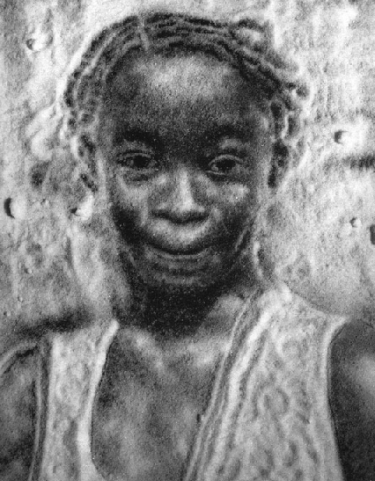
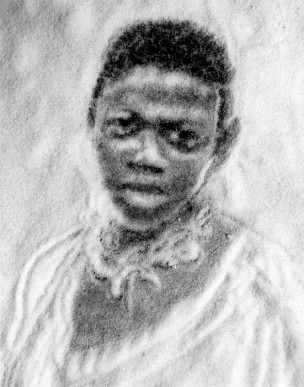

The early pieces took ideas from drawing. I was replacing the drawn line with physical things like thread or wire. The sugar and soil pieces have a lot more to do with photography itself: the idea that the image is composed by a certain logical arrangement of tiny dots that we can’t really perceive individually. Well, I just made the dots bigger and gave them identity. The Sugar Children also developed out of a very personal circumstance. Marion and I spent a few days in St. Kitts and swam every day with a group of local children who were very sweet and unspoiled by Nike commercials. We got to know their names and a few things about them. They were very happy kids. Later on we had a chance to visit the place where most of their parents worked on the sugar plantations. The hard labor in the scorching sun had certainly taken a toll on their outlook. They were very sad and bitter. I took photographs of the children and brought them back to New York, and one morning as I was drinking my coffee and looking at the pictures, I remembered this poem by the Brazilian poet Ferreira Gullar in which he is drinking coffee and begins to wonder about the origin of the sugar. He ends with a seminal phrase: “It is with the bitter lives of bitter people that I sweeten my coffee on this beautiful morning in Ipanema.” The radiant childhood of those children will inevitably be transformed by sugar. Children who become sugar. It hit me like a brick. I went to Canal Street and bought black paper and tried to copy the snapshots by sprinkling sugar over its surface. I was very surprised when it worked.
— Vik Muniz, from an interview with Charles Stainback, 1998
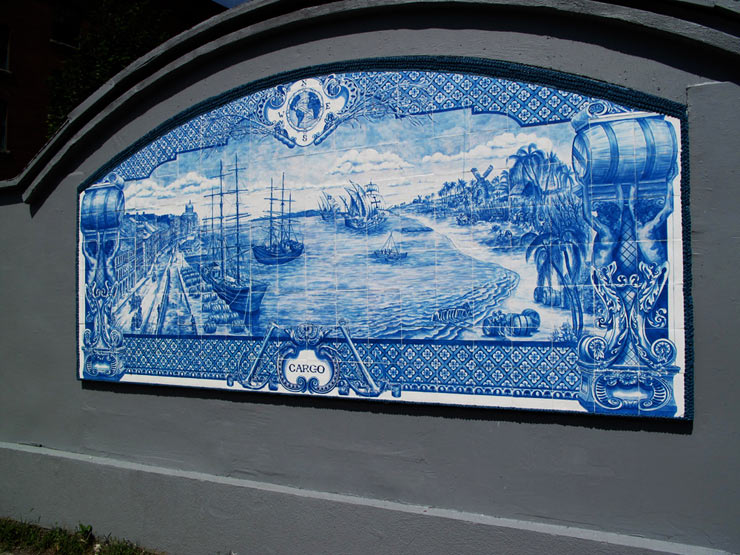
The first component was the creation of a sugar mural, created in the guise of a traditional ceramic “azulejo”. The image depicted speaks of the history of sugar, linking the port of Montreal into the global network of sugars history and the slave trade that supported this industry. The image links source and destination for all of the “cargo” related to this history, both sugar barrels and human cargo that were carried across the oceans.
— Shelley Miller, from her web site
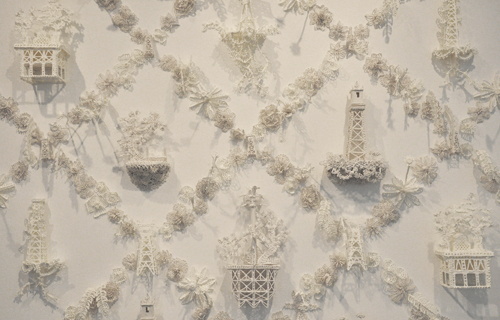
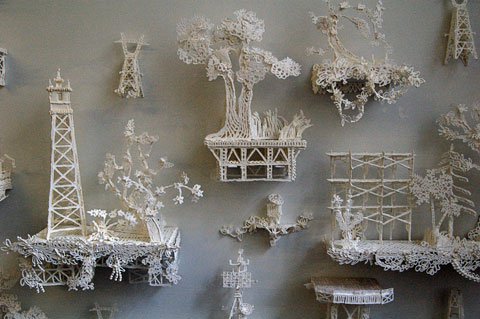

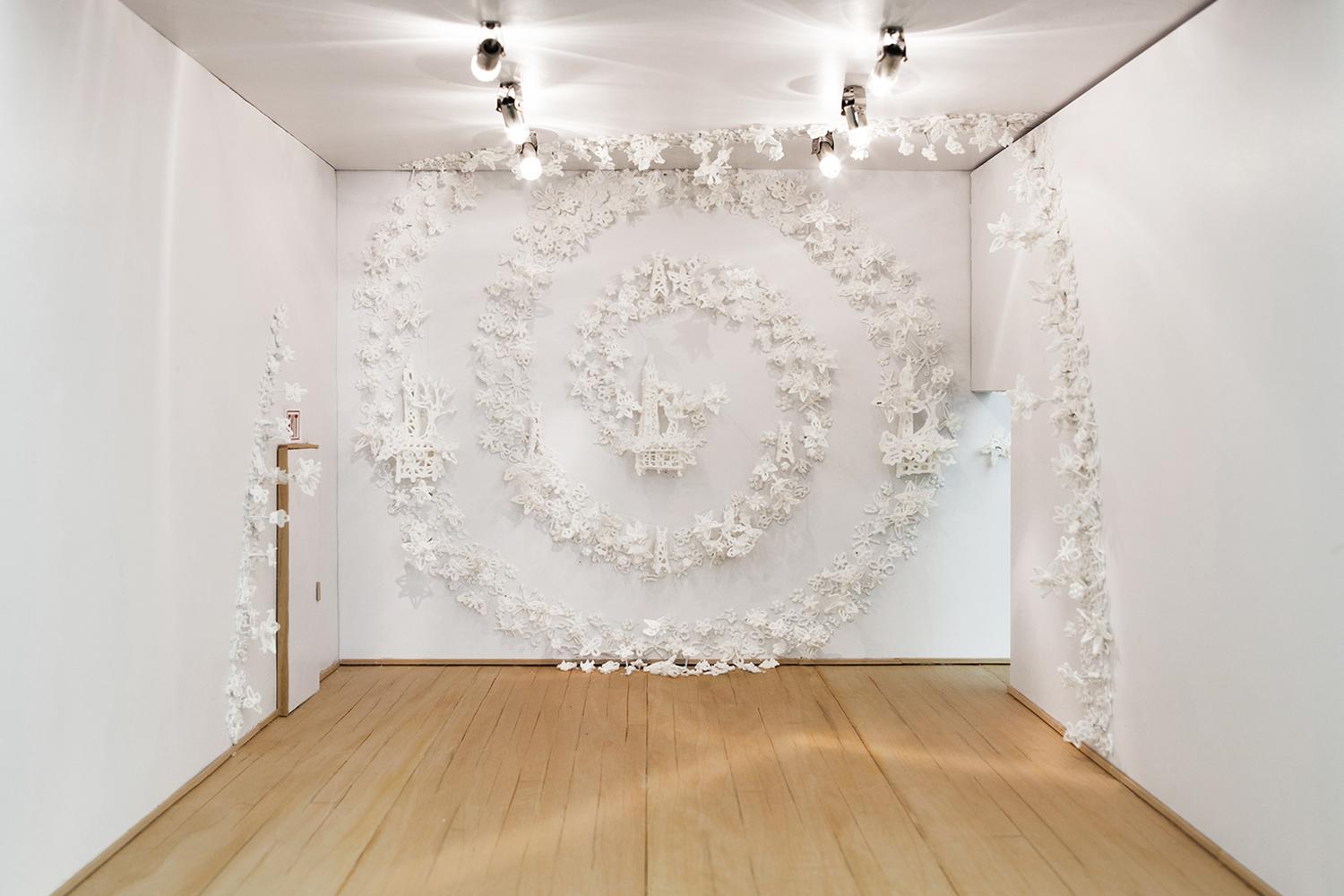
It’s sugar and egg whites, an icing mixture. It’s something I started using a long time ago because I was in New York and didn’t have any money. I had gotten a studio though, but didn’t have tools and just wanted to start making things. I was looking for a material that would mean something to me. There was nobody artistic in my family, really, but my grandmother had a craft club and she lived next door. They made bouquets of tiny flowers out of salt dough. And I thought they were amazing. For myself, I was thinking of something that seemed feminine, sweet and domestic, and also I wanted to work off material that was white.
— Susan Graham, in an interview with Robin Tung of the Daily Serving, also watch this video interview with the artist
NOTE: As the teacher, you will need to consider the benefits of when you share works by established artists. When shown early in the process they can get the creative juices flowing, but they can also lead to self-censoring. Remember, the goal is not to create portfolio-worthy pieces, though that may happen. The goal is to practice thinking expansively and to become more artistically fluent, agile, and responsive.
Please share if you know others who create art made from sugar.

Comments are closed, but trackbacks and pingbacks are open.